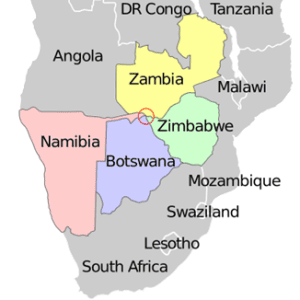TAG: GS 1: GEOGRAPHY
THE CONTEXT: A severe drought is devastating Southern Africa, putting over 270,000 children across six of the region’s hardest-hit countries at grave risk.
EXPLANATION:
- The United Nations Children’s Fund (UNICEF) has projected that by 2024, these children will be subject to severe acute malnutrition that could be fatal.
- Such a situation is worsened by El-Nino driven weather patterns that have resulted in very little rain and hence, national level food emergency declarations throughout the region.
Impact of El Niño and National Disasters
- The harshest impacts of this climatic emergency are being felt by Lesotho, Botswana, Malawi, Namibia, Zambia and Zimbabwe.
- El Niño phenomenon made Lesotho be among the first to declare a state of national food disaster.
- Botswana, Malawi, Namibia, Zambia and Zimbabwe followed with similar announcements.
- Zambia, Malawi and Zimbabwe declared the drought a national disaster between February and April 2024.
- El Nino-driven weather patterns have led to severe disruptions in food production in Malawi especially
- Crops such as maize have suffered greatly due to insufficient rainfall; floods as well as extended dry spells leading to serious food insecurity across 23 out of the country’s 28 districts.
- Millions of households will be affected in these areas alone in Malawi.
- Over 9.8 million people are suffering from this drought which has covered more than 86 districts out of the country’s total of 117 which Zambia is experiencing.
- Zimbabwe remains highly affected with over 80% of the country receiving below average rainfall resulting into major agricultural losses including damaged area on corn planted farms estimated at around 12%.

The Devastating Effects on Children
- UNICEF reports that 7.4 million children in Lesotho, Malawi, Namibia, Zambia, and Zimbabwe are currently living in conditions of child food poverty.
- Among these, more than two million children are surviving on extremely poor diets.
- The shortage of nutritious foods in these regions is a direct result of climate vagaries that have decreased the accessibility, assortment and quality of food.
- Moreover, the impact of droughts goes beyond mere food scarcity.
- Additionally, children are experiencing a decline in access to clean and uncontaminated water thereby exposing them to lethal ailments such as diarrhea.
- These other factors create an even greater danger for children when environmental stresses interrupt appropriate child care services in these countries.
Humanitarian Concerns and Call for Action
- The humanitarian needs stemming from this El Niño-driven crisis are alarming.
- The growing food insecurity and malnutrition, alongside issues of accessing safe water and sanitation, are major threats to children’s health and development.
- There is also a greater threat of disease outbreaks like cholera that adds another level of concern for the affected individuals.
- UNICEF has warned about possible long-term effects on the health and growth of thousands of children due to this climate-driven catastrophe.
- The organization is appealing to the international community for an immediate intervention in order to avoid further worsen the situation.
Urgent Need for Lifesaving Programs and Long-term Solutions
- To address the degeneration of the situation, UNICEF has called for increased and diversified commitment from all stakeholders in order to effectively meet the needs of a region that is quickly becoming overwhelmed by this continually evolving emergency.
- It regards the prevention measures only as temporary and lifesaving, because of the urgency of the situation and the fact that more children can develop severe levels of malnutrition.
- Other than just the firefighting approach, UNICEF’s approach emphasizes the rebuilding process and the need for sustained commitment and creativity in creating capacity for recovery among families and communities.
- The statement emphasizes the need for future-proofed frameworks such as food, water and sanitation services, and integrate sectors of different kinds.
- Additionally, the agency suggests that climate sensitive education and climate effective health systems should be pursued because children’s wellbeing depends on it, to guarantee that despite climate conditions these basic public services for children will remain accessible and quality.
United Nations Children’s Fund (UNICEF)
- UNICEF, officially known as the United Nations Children’s Fund, is a prominent agency of the United Nations dedicated to providing humanitarian and developmental aid to children worldwide.
- It was established in 1946, initially as the United Nations International Children’s Emergency Fund.
- UNICEF was created to address the immediate needs of children and mothers affected by World War II.
- Its mandate has since evolved to focus on the long-term welfare of children and women, particularly in developing countries.
Mission and Activities
- UNICEF operates in 192 countries and territories, making it one of the most recognizable social welfare organizations globally. Its core activities include:
- Health and Nutrition: Providing immunizations, disease prevention, and treatment for children and mothers, including those affected by HIV.
- Education: Promoting access to quality education for all children, particularly in conflict and crisis situations.
- Emergency Relief: Responding to humanitarian crises with lifesaving resources and support.
- Child Protection: Advocating for policies and services that safeguard children’s rights and well-being

